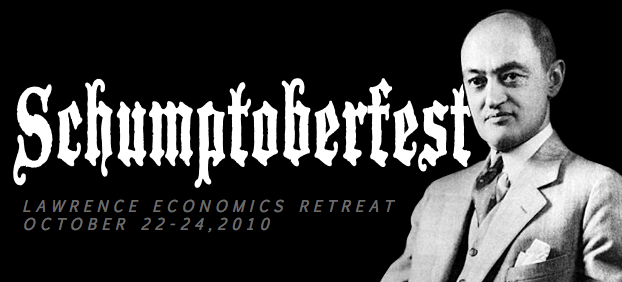I n the second post here, I will simply concentrate on Chapter VII of Capitalism, Socialism, and Democracy, and try to tie together some themes for the weekend. For our purposes, I have numbered the paragraphs 1-13.
n the second post here, I will simply concentrate on Chapter VII of Capitalism, Socialism, and Democracy, and try to tie together some themes for the weekend. For our purposes, I have numbered the paragraphs 1-13.
As we proceed into this chapter, it is probably useful to keep in mind that at the time of this writing, the national income accounts and measurement of economic output were even more primitive than they are today. So, one question is how did economists in 1942 think about “growth” and “output”?
The null hypothesis is immediately stated in the opening sentence of the chapter — that there is some question that “capitalist reality” stifles economic growth. I take “capitalist reality” to mean the consolidation of firms and increasing concentration of industries as they mature. This is going to get at the essence of a “Schumpeterian Hypothesis,” (see the last sentence of paragraph two for a germination of this idea — “big business may have had more to do with creating that standard of life than keeping it down.” We’ll get to the efficiency implications of this in a bit, but for the moment note that he offers two possible rationales for the antagonism toward large firms. One is the idea that growth occurs despite the “managing bourgeoisie” (that is, monopolists restricting output and jacking prices). The second is that this worked for a while, but it cannot proceed indefinitely.
Continue reading Schumptoberfest Mark VII, The Gales of Creative Destruction
 This is a first in a series of short posts to guide the Schumptoberfest readings. I included these readings literally to give you an introduction to Schumpeter and the “Schumpeterian Hypotheses.”
This is a first in a series of short posts to guide the Schumptoberfest readings. I included these readings literally to give you an introduction to Schumpeter and the “Schumpeterian Hypotheses.”


 During the recent oil price spike in 2008, one of my mates suggested that our generation will be the last to enjoy relative ease in air travel. A large number of people, even those with decidedly middle class incomes, have the means to travel extensively and find their way to every nook and cranny the world has to offer. A sustained oil crunch, absent a viable fuel substitute, could indeed cripple the airline industry and leave globetrotting to the relatively affluent.
During the recent oil price spike in 2008, one of my mates suggested that our generation will be the last to enjoy relative ease in air travel. A large number of people, even those with decidedly middle class incomes, have the means to travel extensively and find their way to every nook and cranny the world has to offer. A sustained oil crunch, absent a viable fuel substitute, could indeed cripple the airline industry and leave globetrotting to the relatively affluent. It’s the middle of the summer, and it’s time to check in
It’s the middle of the summer, and it’s time to check in 
 A few weeks ago, despite its substantial girth, I added the new Kaufmann Foundation volume, Invention of Enterprise: Entrepreneurship from Ancient Mesopotamia to Modern Times to the black hole that is my reading list. The reason for my excitement was the extra-ordinary group of volume editors. David Landes is a pioneer in entrepreneurship and development, having written the highly-regarded
A few weeks ago, despite its substantial girth, I added the new Kaufmann Foundation volume, Invention of Enterprise: Entrepreneurship from Ancient Mesopotamia to Modern Times to the black hole that is my reading list. The reason for my excitement was the extra-ordinary group of volume editors. David Landes is a pioneer in entrepreneurship and development, having written the highly-regarded  Our weekly EconT
Our weekly EconT